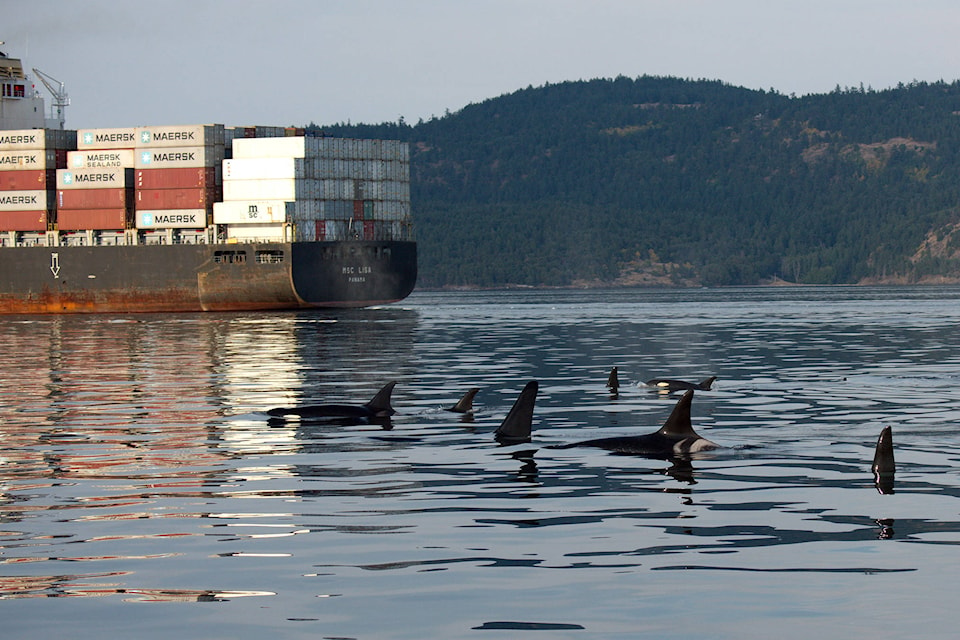Female orcas are more likely than males to stop eating when noisy vessels get too close to the pod, surprising new research indicates.
The study out of the San Juan Islands in Washington State, published recently in the journal Frontiers in Marine Science, looked at the foraging habits of the endangered southern resident killer whale population that shares its habitat in B.C. waters. The findings highlight the importance sex-specific responses to marine disturbances, and raises concerns over female reproduction capacity.
“A female’s decision to forego foraging states due to the close proximity of vessels could have cascading effects on the ability to meet energetic requirements to support reproductive efforts,” the study reads. “This is particularly concerning in an endangered population that is in decline.”
There are currently just 74 killer whales in the southern-resident population. The researchers hope the study will influence future management actions in preserving foraging opportunities and recovery efforts.
READ MORE: Coast Guard ramps up protections for B.C. whales
Between 2010 and 2014, researchers led by wildlife biologist Marla Holt with the National Oceanic and Atmospheric Administration attached temporary sensor-tags to members of the population to monitor their subsurface behaviour with prey capture in a critical habitat. Over the course of three seasons measurements were taken during variable vessel activity on the surface, including vessel counts, distance and speed.
Among the results, the findings showed the whales made fewer and shorter dives for prey when the vessels had an average distance of less than 366 metres.
The findings are consistent with other cetacean studies, but here researchers showed females were especially influenced by vessel activity.
It implies females experience risk to vessels differently than males. This is likely because they’re more attentive to the well-being of young offspring. Deep dives also put greater energy demands on the smaller female body.
“A female’s decision to forego foraging in the presence of close vessels could hinder her ability to meet energetic requirements to support reproductive efforts, including fetal growth in pregnancy and lactation costs after calving,” the study reads. “This is particularly concerning in an endangered mammalian population because recovery cannot occur without successful reproductive outcomes among breeding individuals, particularly in long-lived females with birthing intervals of 3–7 years.”
READ MORE: Victoria researcher finds ‘holy grail’ of killer whales
